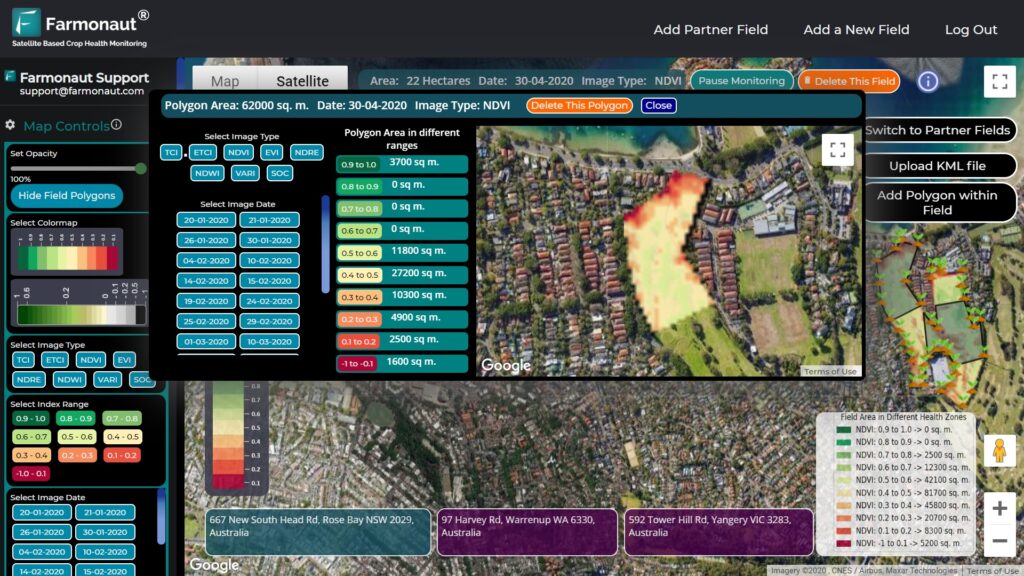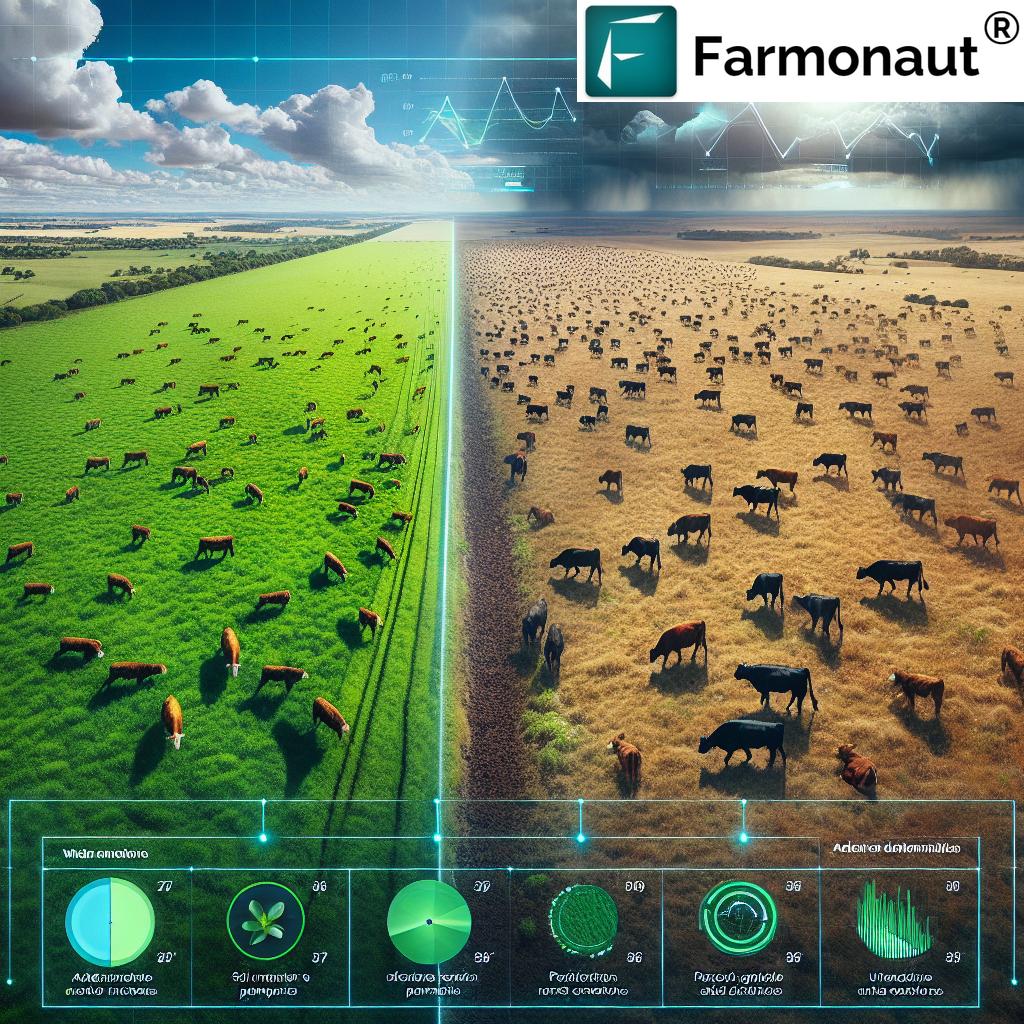Revolutionizing Agriculture: New Shuttle Loader Facility Boosts Grain Storage and Market Access in Wisconsin
“Wisconsin’s new shuttle loader facility can store 3.9 million bushels of grain, equivalent to 106,000 metric tons.”
In the heart of America’s Dairyland, a groundbreaking development is reshaping the agricultural landscape. We’re excited to share news of a state-of-the-art grain storage facility in Wisconsin that’s set to revolutionize agricultural cooperative services and market access for farmers. This innovative shuttle loader facility, constructed on a sprawling 40-acre site, represents a significant leap forward in bulk grain handling and storage capabilities.
As we delve into the details of this remarkable project, we’ll explore how it’s poised to streamline farming operations, enhance productivity, and open up new market opportunities for the region’s hardworking farmers. Join us as we examine the cutting-edge features, strategic advantages, and potential impact of this game-changing addition to Wisconsin’s agricultural infrastructure.
The Birth of a Revolutionary Grain Storage Facility
On March 12, 2025, Alcivia, a member-owned agricultural and energy cooperative, alongside Burlington Northern Santa Fe (BNSF) Railway, celebrated a momentous occasion in Hager City, Wisconsin. The ribbon-cutting ceremony marked the grand opening of a new shuttle loader facility that promises to transform the grain storage and transportation landscape in the region.
Construction on this ambitious project began in April 2024, culminating in a facility that stands as a testament to modern agricultural innovation. Let’s break down the key features that make this grain storage facility a game-changer for Wisconsin farmers:
- Impressive Storage Capacity: Eight steel grain bins with a combined storage capacity of 3.9 million bushels
- Advanced Drying Technology: Two 4,700 bph grain dryers ensure optimal moisture levels for stored grain
- Efficient Grain Handling: Three 1,500-bushel-capacity dump pits contributing to a remarkable grain handling speed of 60,000 bph
- Extensive Rail Infrastructure: 21,573 linear feet of Class I BNSF-supported track for seamless transportation
- Rapid Train Loading: An 80,000-bushel bulk weigher capable of loading out a train in under 10 hours
This facility isn’t just about numbers; it’s about creating a hub that meets the diverse needs of modern agriculture. By centralizing these resources, Alcivia is paving the way for a more efficient, productive, and competitive farming community in Wisconsin.

Expanding Market Access and Opportunities
One of the most significant advantages of this new shuttle loader facility is its strategic location. Situated to provide farmers with crucial access to the Mississippi and Illinois rivers, it opens up a world of new market opportunities. This geographical advantage translates into several key benefits:
- Enhanced access to domestic and international markets
- Reduced transportation costs for farmers
- Increased competitiveness in the global grain market
- Potential for higher profits due to expanded market reach
By bridging the gap between local farmers and major waterways, this facility is set to play a pivotal role in boosting Wisconsin’s agricultural economy. It’s not just about storing grain; it’s about connecting farmers to a wider world of possibilities.
Streamlining Operations for Enhanced Productivity
In the world of agriculture, time is money, and efficiency is key. This new facility in Wisconsin is designed with these principles in mind, offering a range of services that streamline operations and boost overall productivity. Here’s how:
- High-Speed Grain Handling: With a handling speed of 60,000 bph, farmers can unload their harvest quickly, saving precious time during peak seasons.
- Advanced Drying Technology: The two 4,700 bph grain dryers ensure that grain is stored at optimal moisture levels, reducing the risk of spoilage and maintaining quality.
- Efficient Train Loading: The ability to load a train in under 10 hours means faster turnaround times and more efficient transportation of grain to markets.
These features combine to create a seamless experience for farmers, from the moment they arrive with their harvest to the point where their grain is on its way to market. By reducing wait times, minimizing handling, and optimizing storage conditions, this facility is set to become a cornerstone of efficient farming operations in the region.
Future-Proofing Agriculture: Planned Expansions and Services
While the current capabilities of the shuttle loader facility are impressive, Alcivia’s vision extends even further. The cooperative has outlined plans for additional services that will further cement this facility’s role as a comprehensive agricultural resource center. These planned expansions include:
- Liquid Fertilizer Terminal: A 24-hour unattended two-bay loading terminal for liquid fertilizer
- Propane Services: Rail liquid propane unloading and storage facilities
These additions will transform the facility into a one-stop-shop for farmers, offering not just grain storage and transportation, but also key agricultural inputs. This holistic approach to agricultural services is set to revolutionize how farmers in Wisconsin manage their operations, saving time and improving overall efficiency.
“The 40-acre grain storage facility in Wisconsin features high-speed handling equipment and extensive rail infrastructure for efficient transport.”
Comparing the New Facility to Traditional Grain Storage
To truly appreciate the revolutionary nature of this new shuttle loader facility, it’s helpful to compare it with traditional grain storage methods. The following table illustrates the key differences:
| Feature | New Shuttle Loader Facility | Traditional Grain Storage |
|---|---|---|
| Storage Capacity | 3.9 million bushels | Typically 100,000 – 500,000 bushels |
| Grain Drying Technology | Two 4,700 bph high-capacity dryers | Single, lower-capacity dryer |
| Loading Speed | 60,000 bph | 5,000 – 10,000 bph |
| Market Access | Direct access to major rivers and rail networks | Limited to local markets or additional transport required |
| Additional Services | Planned liquid fertilizer and propane services | Typically limited to grain storage only |
As the table clearly shows, the new facility in Wisconsin represents a significant leap forward in every aspect of grain storage and handling. Its superior capacity, advanced technology, and integrated services place it leagues ahead of traditional storage methods, offering farmers unprecedented efficiency and market access.
The Impact on Wisconsin’s Agricultural Community
The introduction of this state-of-the-art shuttle loader facility is set to have far-reaching effects on Wisconsin’s agricultural community. Here’s how different stakeholders stand to benefit:
- Farmers: Access to advanced storage facilities, faster unloading times, and expanded market opportunities
- Local Economy: Increased agricultural productivity and competitiveness can lead to economic growth in the region
- Consumers: Potentially lower food prices due to reduced transportation and storage costs
- Agricultural Cooperatives: Enhanced ability to serve members and compete in the global market
By providing farmers with the tools and infrastructure they need to thrive in today’s competitive agricultural landscape, this facility is not just an investment in storage capacity—it’s an investment in the future of Wisconsin’s farming community.

Embracing Technology in Agriculture
The new shuttle loader facility in Wisconsin is a prime example of how technology is transforming agriculture. However, it’s not the only way that farmers can leverage innovation to improve their operations. Modern agriculture is increasingly turning to digital solutions to enhance productivity and sustainability.
One such solution is Farmonaut, a pioneering agricultural technology company that offers advanced, satellite-based farm management solutions. Through its web app, Android app, and iOS app, Farmonaut provides farmers with valuable tools for crop health monitoring, resource management, and data-driven decision-making.
While the new shuttle loader facility focuses on physical infrastructure, platforms like Farmonaut complement these advancements by providing digital infrastructure. Together, these innovations are creating a more resilient, efficient, and sustainable agricultural sector.
The Role of Satellite Technology in Modern Farming
As we marvel at the physical innovations of the new shuttle loader facility, it’s worth considering how satellite technology is playing an equally transformative role in agriculture. Satellite-based solutions, like those offered by Farmonaut, are revolutionizing farm management in several key ways:
- Crop Health Monitoring: Satellite imagery allows farmers to track crop health in real-time, identifying issues before they become visible to the naked eye.
- Resource Optimization: By providing detailed data on soil moisture and crop needs, satellite technology helps farmers use water and fertilizers more efficiently.
- Yield Prediction: Advanced algorithms can analyze satellite data to predict crop yields, helping farmers and markets prepare for upcoming harvests.
- Weather Forecasting: Satellite data contributes to more accurate local weather predictions, crucial for farming operations.
These capabilities complement the physical infrastructure improvements represented by the new Wisconsin facility. While the shuttle loader provides state-of-the-art storage and transportation, satellite technology offers the data-driven insights needed to optimize crop production and resource use.
The Future of Agriculture: Integrating Physical and Digital Infrastructure
As we look to the future of agriculture, it’s clear that success will depend on the seamless integration of physical infrastructure, like the new shuttle loader facility, with digital technologies such as satellite-based farm management systems. This integration offers several exciting possibilities:
- Data-Driven Storage Decisions: Satellite crop monitoring could inform storage facilities about upcoming harvest volumes, allowing for better capacity planning.
- Optimized Transportation: Real-time yield predictions could help transportation networks prepare for grain movements, reducing bottlenecks and improving efficiency.
- Enhanced Market Intelligence: Combining storage data with satellite-based crop health information could provide valuable insights for commodity markets.
- Sustainable Farming Practices: The efficiency gains from both physical and digital innovations can contribute to more sustainable agricultural practices.
By leveraging both types of infrastructure, farmers can not only store and transport their grain more efficiently but also make more informed decisions about when to plant, harvest, and sell their crops.
Empowering Farmers with Knowledge and Tools
The new shuttle loader facility in Wisconsin and digital platforms like Farmonaut share a common goal: empowering farmers with the knowledge and tools they need to succeed in an increasingly complex agricultural landscape. Here’s how these innovations are achieving this goal:
- Access to Markets: The shuttle loader facility provides physical access to broader markets, while digital platforms offer market insights and trends.
- Efficiency Improvements: Both physical and digital innovations help farmers save time and resources, improving overall operational efficiency.
- Data-Driven Decision Making: From storage capacity information to satellite-based crop health data, farmers have more information than ever to guide their decisions.
- Risk Management: Better storage facilities and real-time crop monitoring both contribute to reduced risk for farmers.
By combining the benefits of advanced physical infrastructure with cutting-edge digital tools, we’re creating an environment where farmers can thrive, adapting to challenges and seizing new opportunities in the ever-evolving world of agriculture.
Conclusion: A New Era for Wisconsin Agriculture
The opening of the new shuttle loader facility in Hager City, Wisconsin, marks the beginning of a new era for agriculture in the region. With its impressive storage capacity, advanced grain handling technology, and strategic location providing access to major waterways, this facility is set to revolutionize how farmers store, manage, and market their grain.
But the impact of this development extends beyond its physical presence. It represents a broader trend of innovation and modernization in agriculture, one that encompasses both physical infrastructure improvements and digital advancements. As farmers in Wisconsin and beyond embrace these new tools and technologies, we can look forward to a future of increased productivity, sustainability, and prosperity in the agricultural sector.
The journey of agricultural innovation doesn’t end here. As we continue to push the boundaries of what’s possible in farming, we can expect to see even more exciting developments that will shape the future of food production and distribution. The new shuttle loader facility in Wisconsin is just the beginning—a glimpse into the promising future of modern agriculture.
FAQs
- Q: How does the new shuttle loader facility benefit Wisconsin farmers?
A: The facility provides increased storage capacity, faster grain handling, improved drying technology, and better access to markets via rivers and rail networks. - Q: What is the storage capacity of the new facility?
A: The facility can store 3.9 million bushels of grain. - Q: How does this facility compare to traditional grain storage methods?
A: It offers significantly larger storage capacity, faster loading and unloading speeds, and more advanced drying technology compared to traditional methods. - Q: What additional services are planned for the facility?
A: Future plans include adding a liquid fertilizer terminal and propane services. - Q: How does the facility improve market access for farmers?
A: Its strategic location provides access to the Mississippi and Illinois rivers, opening up broader market opportunities for farmers.
Earn With Farmonaut: Affiliate Program
Earn 20% recurring commission with Farmonaut’s affiliate program by sharing your promo code and helping farmers save 10%. Onboard 10 Elite farmers monthly to earn a minimum of $148,000 annually—start now and grow your income!
For more information on how satellite technology is revolutionizing agriculture, visit Farmonaut’s web app, download the Android app, or get the iOS app. Developers interested in integrating Farmonaut’s satellite and weather data can explore the API and refer to the API Developer Docs.










